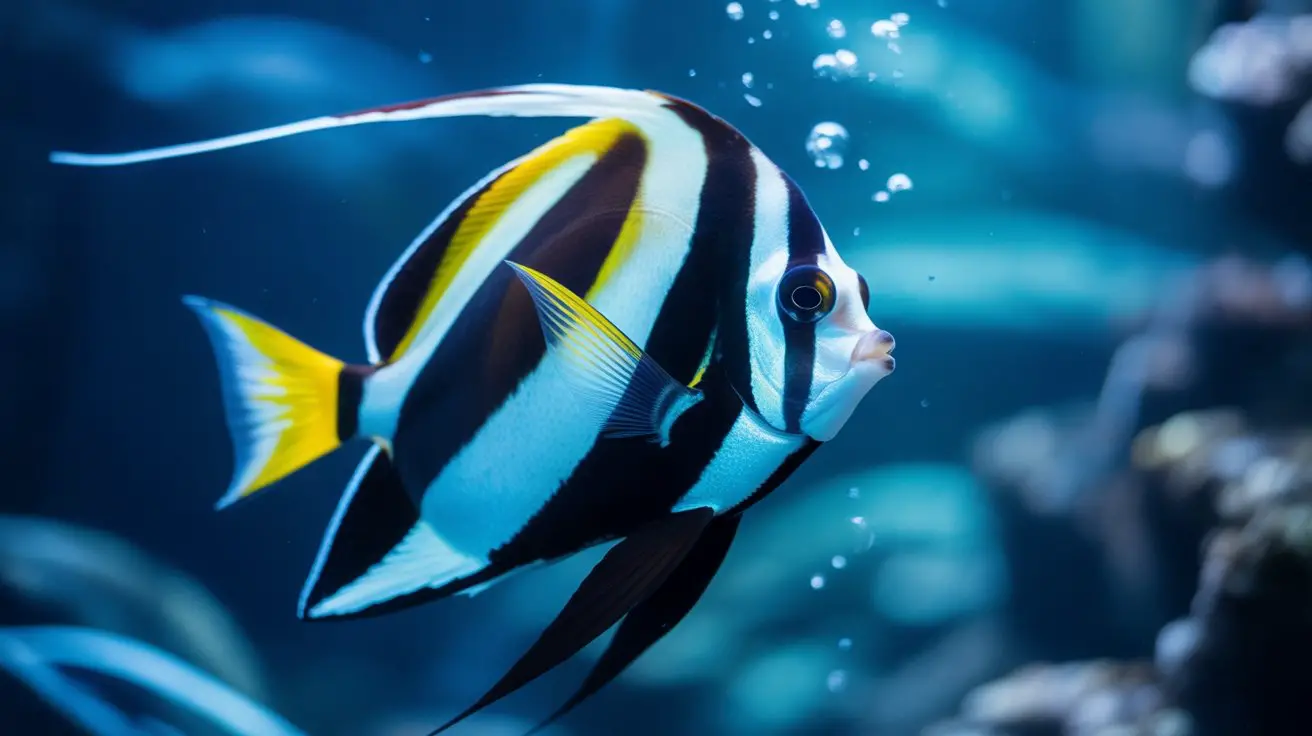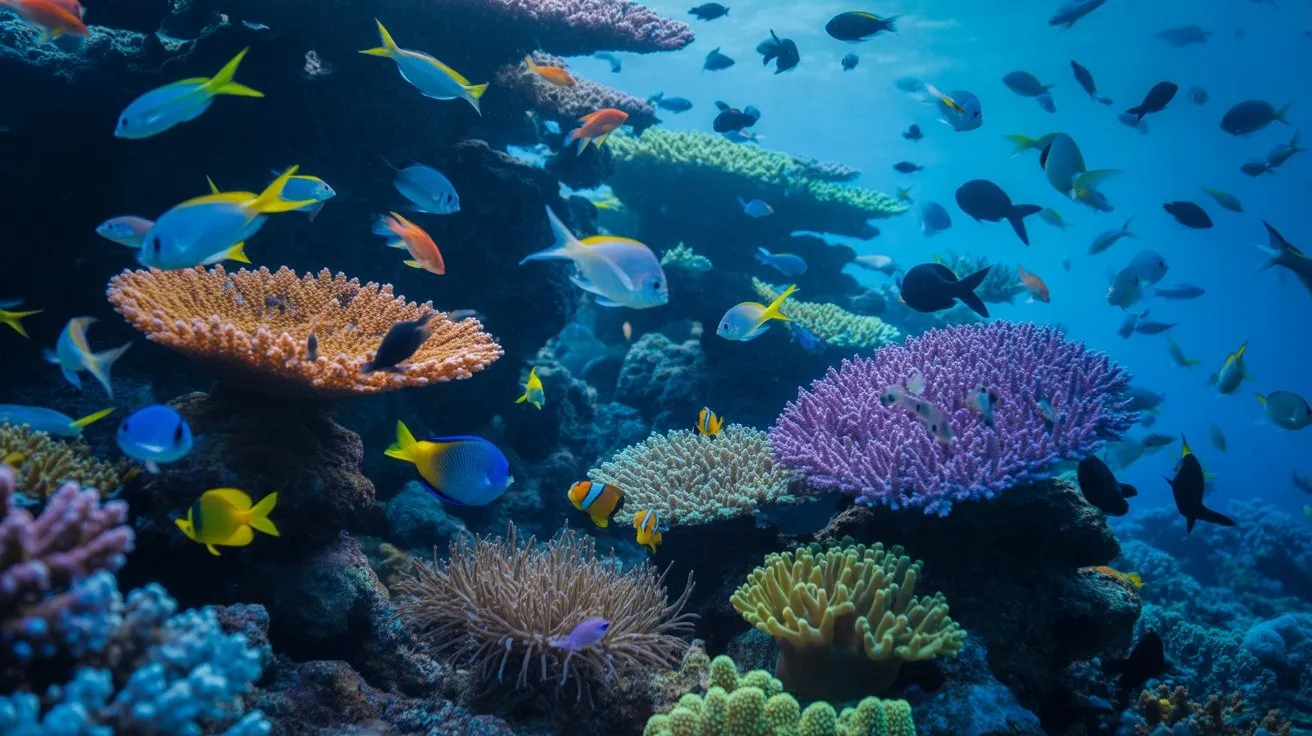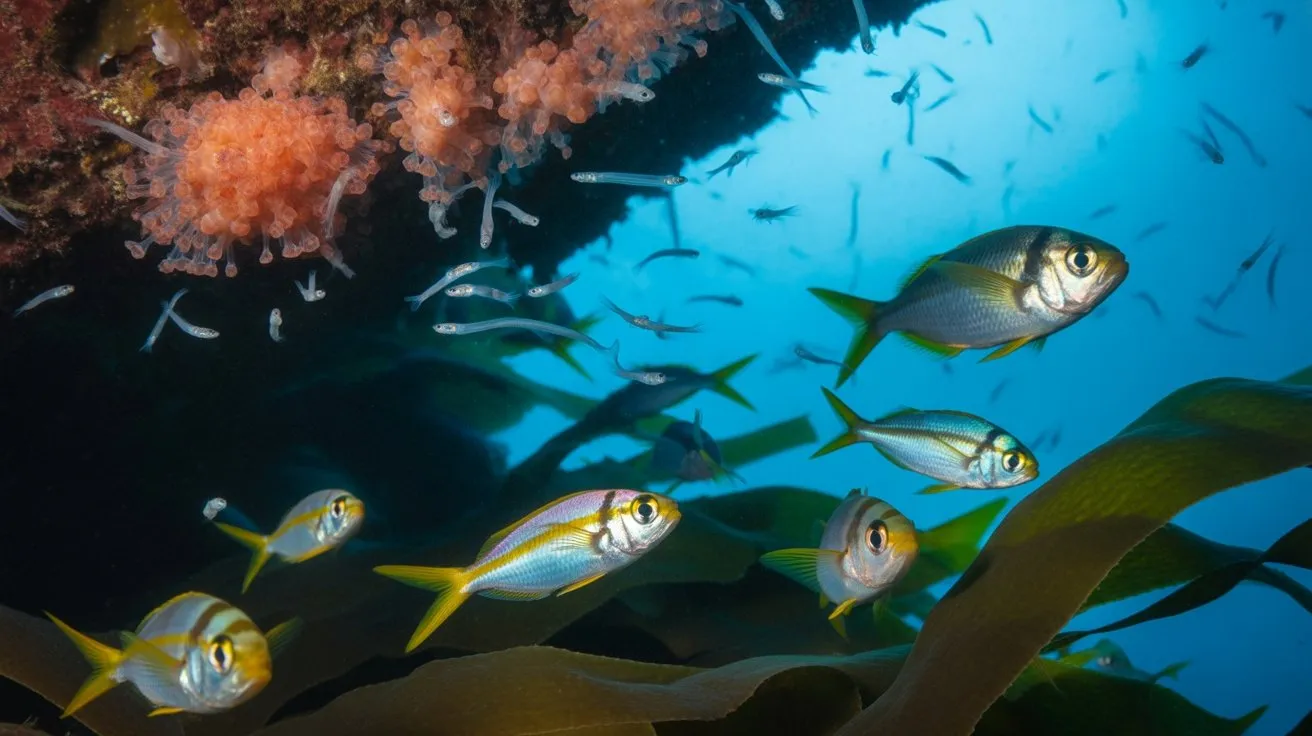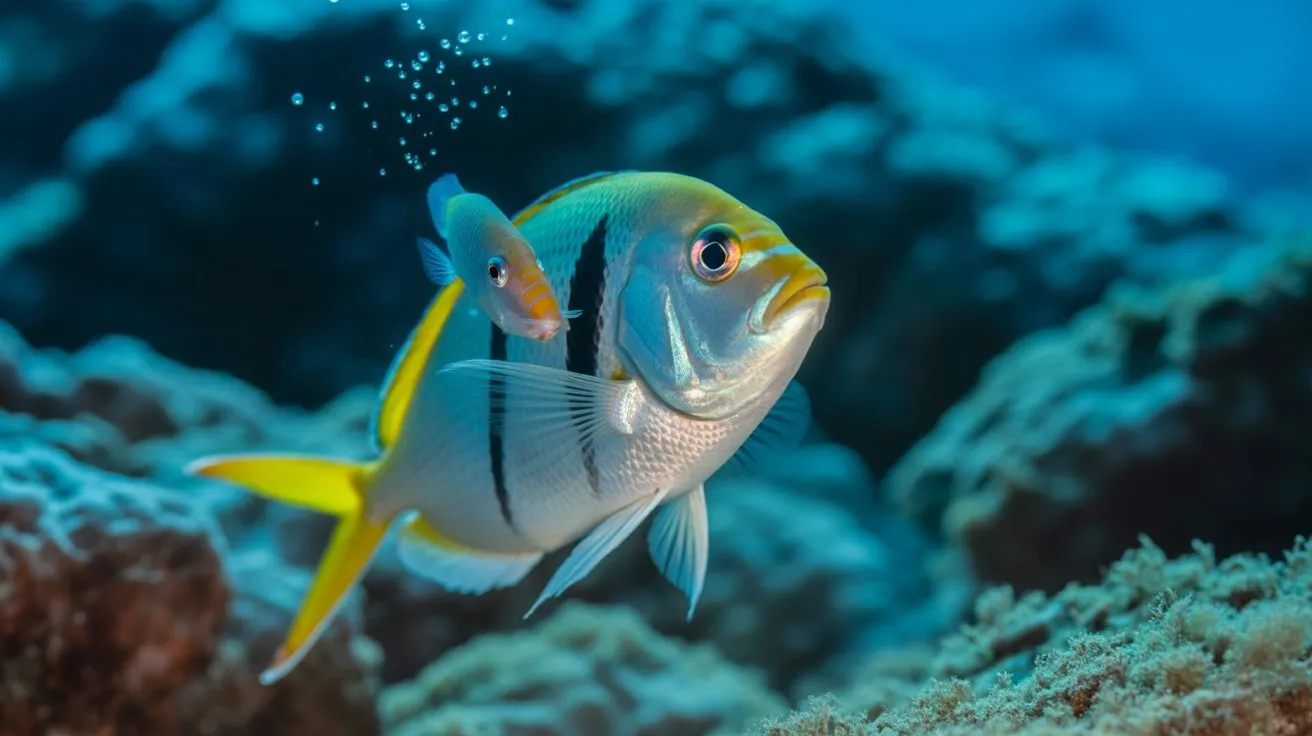You’ve likely admired the Moorish idol’s distinctive black and white stripes and elongated dorsal fin, but maintaining this species in captivity presents formidable challenges that even experienced marine aquarists struggle to overcome. Their specialized feeding behavior, requiring specific sponge and coral polyp nutrients, creates nutritional deficiencies in artificial environments. Combined with their heightened cortisol responses to confinement and compromised osmoregulation in suboptimal conditions, these factors contribute to mortality rates exceeding 90% within the first year.
The Natural Habitat and Behavior of Moorish Idols
When you observe Moorish idols (Zanclus cornutus) in their natural Pacific and Indian Ocean habitats, you’ll notice they inhabit coral-rich areas at depths ranging from 3 to 180 meters, with ideal populations occurring between 10-40 meters where coral diversity peaks.
You’ll find they’re highly mobile herbivores that form loose aggregations while foraging extensively across reef zones. They’ll consume sponges, tunicates, and algae through specialized grazing behaviors requiring constant movement across vast territories.
Their natural feeding patterns involve covering several hundred meters daily while maintaining complex social hierarchies.
You’ll observe they’re extremely sensitive to water quality fluctuations and require consistent temperature ranges between 24-28°C. These behavioral adaptations make replicating their natural conditions extraordinarily challenging in captive environments. Additionally, the health of Moorish idols is closely linked to the overall coral reef health, as they depend on the availability of diverse coral species for their diet and habitat.
Complex Dietary Requirements That Are Nearly Impossible to Replicate
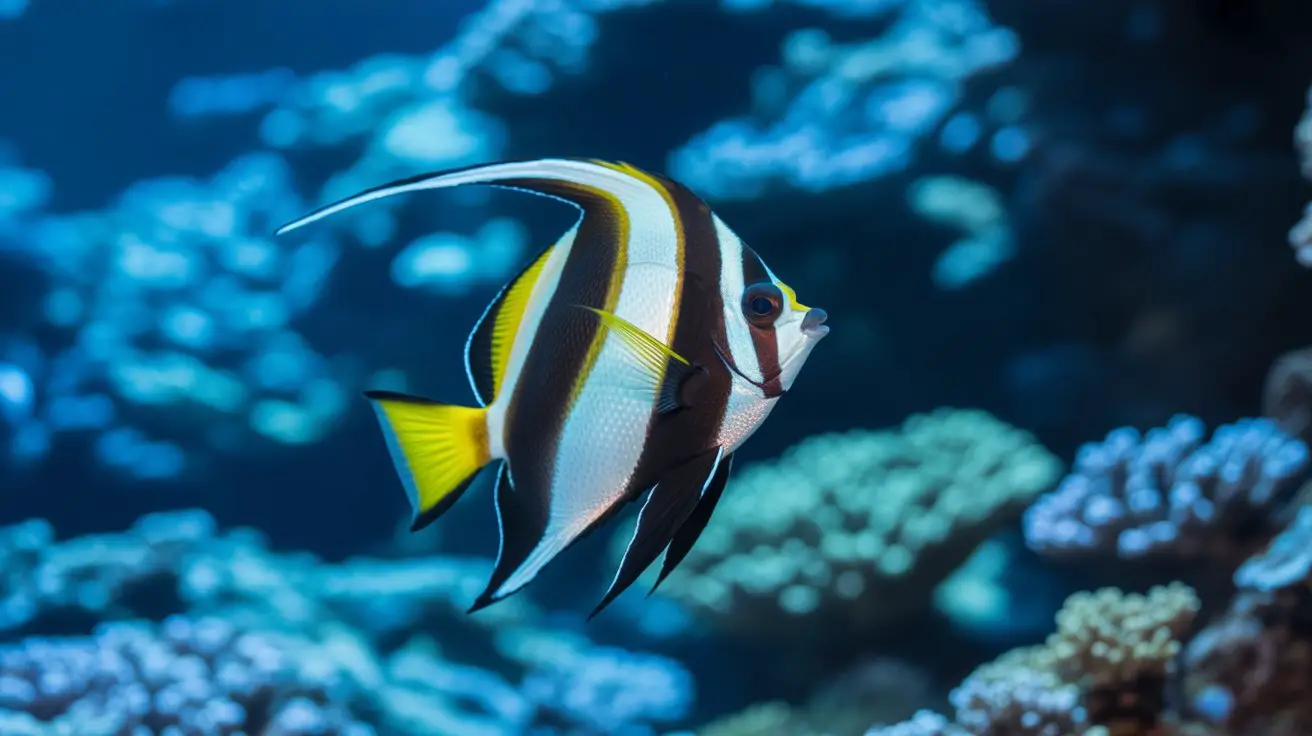
The specialized feeding behaviors observed in wild Moorish idols directly correlate with their highly specific nutritional requirements that present insurmountable challenges for aquarium keepers.
You’ll find these fish naturally consume over 40 species of sponges, tunicates, and bryozoans containing essential bioactive compounds unavailable in commercial foods. Their grazing methodology requires constant foraging across vast reef territories, consuming microscopic organisms every few minutes throughout daylight hours.
You can’t replicate their metabolic dependency on specific alkaloids, secondary metabolites, and symbiotic bacteria found exclusively in live coral polyps. Standard aquarium diets lack vital enzymatic cofactors and amino acid profiles these fish require for proper digestion.
Even vitamin-enriched frozen preparations fail to provide the complex biochemical matrix that sustains their specialized digestive physiology in natural environments.
Extreme Sensitivity to Water Quality and Environmental Changes
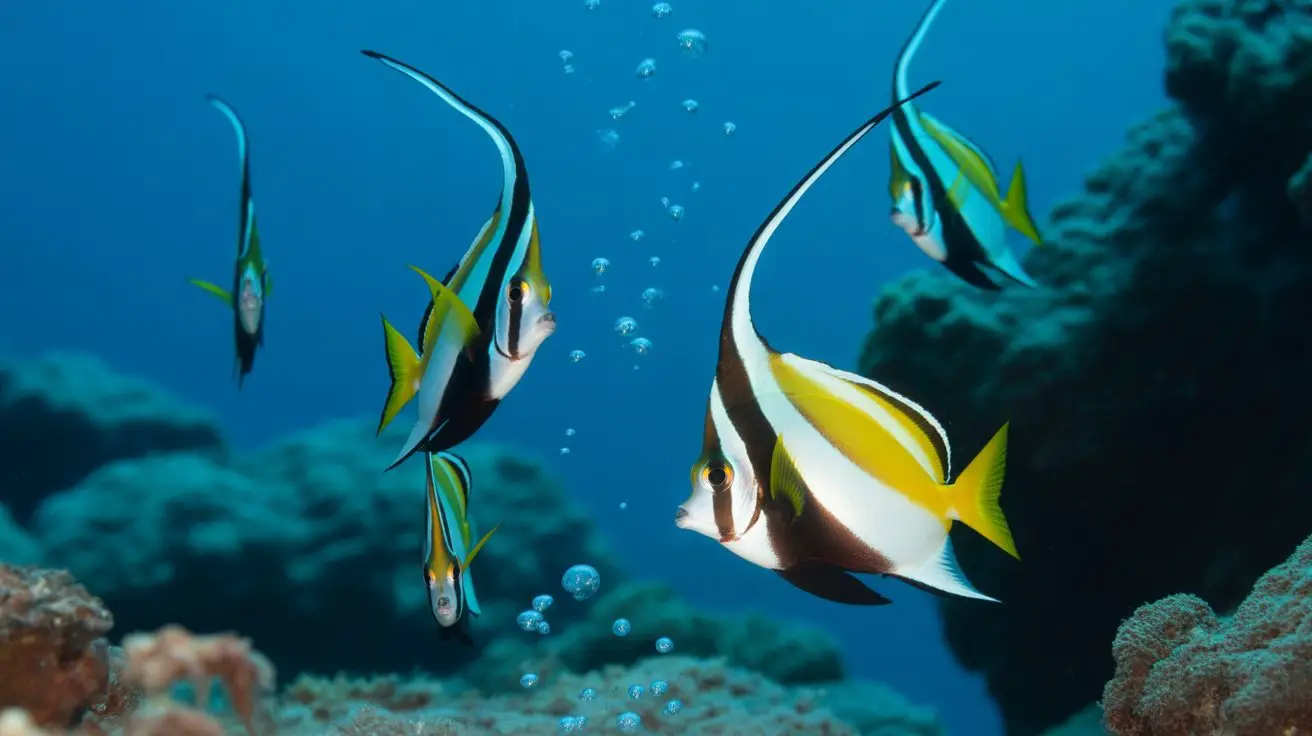
Beyond their nutritional complexities, Moorish idols exhibit hypersensitive physiological responses to even minimal deviations in water chemistry parameters that aquarium systems can’t consistently maintain.
You’ll find their immune systems rapidly compromised when nitrate levels exceed 10 ppm or when pH fluctuates beyond 8.1-8.4. Temperature variations of just 2°F trigger stress responses that manifest as lateral line erosion and susceptibility to protozoan parasites.
Their osmoregulatory mechanisms can’t adapt to artificial salinity fluctuations that closed systems inevitably produce.
You’ll observe immediate behavioral changes—erratic swimming patterns, reduced feeding responses—when dissolved oxygen drops below 7 ppm. Even brief exposure to copper-based medications proves fatal, as their sensitive gill epithelia absorb toxins more readily than other marine species.
Standard aquarium filtration simply can’t replicate the pristine, stable conditions they require. Furthermore, their extreme sensitivity to temperature variations makes them particularly vulnerable to changes that can disrupt their delicate ecosystems.
High Stress Levels and Poor Adaptation to Captivity
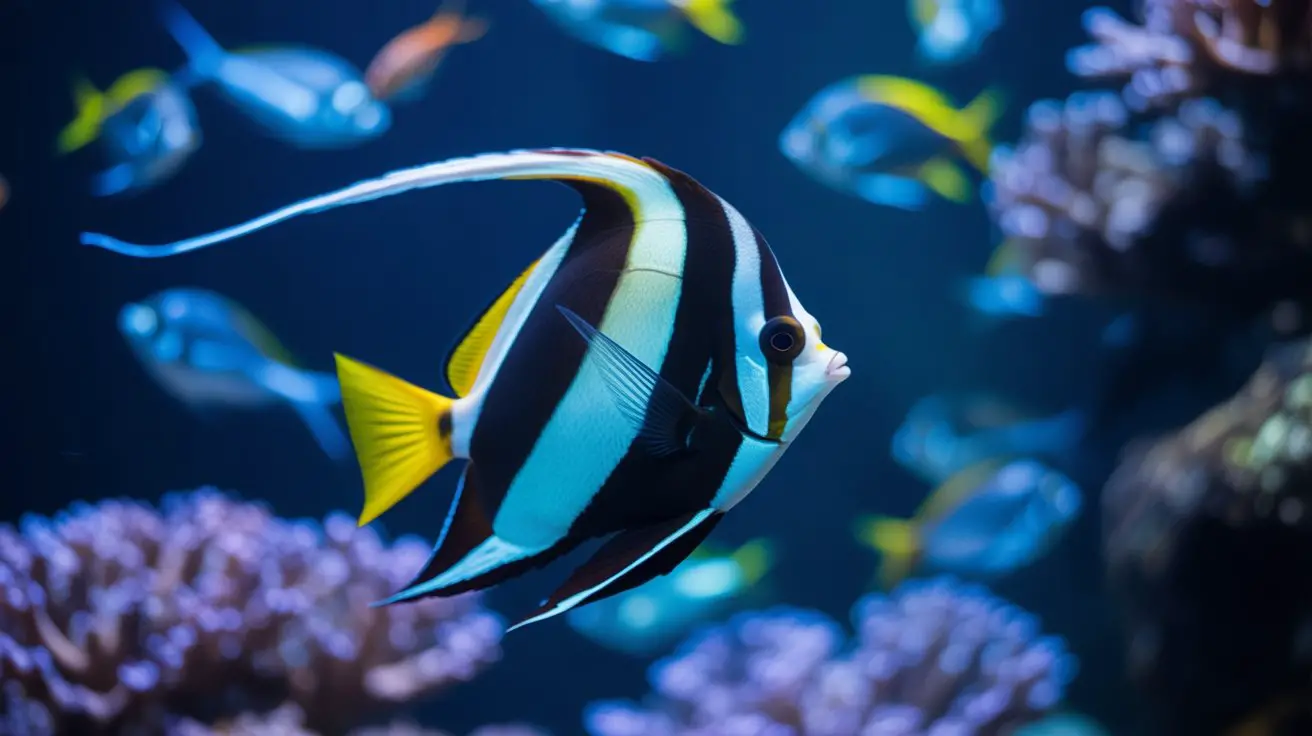
Since Moorish idols evolved in expansive reef environments spanning thousands of square miles, confinement triggers profound psychological distress that manifests through measurable cortisol elevation and compromised cellular metabolism.
You’ll observe stereotypical behaviors including repetitive swimming patterns, glass surfing, and territorial aggression when these fish can’t establish natural social hierarchies. Their neuroendocrine systems aren’t adapted for captive constraints, resulting in chronic stress responses that suppress immune function and disrupt osmoregulation.
The species exhibits poor behavioral plasticity compared to traditional aquarium fish. You can’t replicate the complex environmental gradients and social dynamics they require.
Captive specimens demonstrate reduced feeding responses, impaired reproduction, and shortened lifespans averaging 6-18 months versus 7+ years in wild populations, indicating fundamental incompatibility with artificial environments. Additionally, marine mammals, as keystone species, play a crucial role in maintaining the health of ocean ecosystems, which highlights the importance of their natural behaviors that cannot be replicated in captivity.
Disease Susceptibility and Weakened Immune Systems in Aquariums
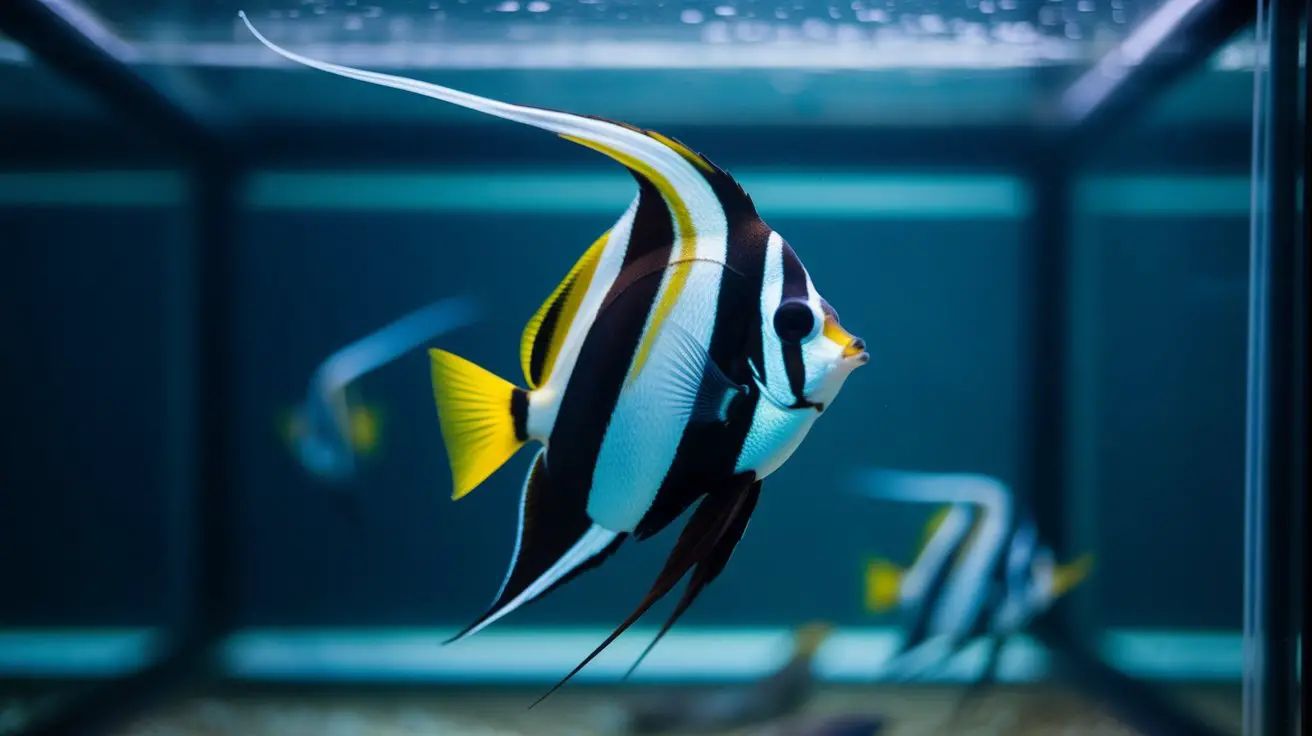
When chronic stress compromises Moorish idols’ physiological defenses, their immune systems become considerably more vulnerable to pathogenic infections that rarely affect wild populations.
You’ll observe elevated cortisol levels suppressing lymphocyte production and antibody synthesis, creating immunodeficiency states. Marine ich (Cryptocaryon irritans), bacterial septicemia, and fungal infections exploit these weakened defenses rapidly.
The fish’s reduced ability to mount inflammatory responses means minor abrasions become entry points for opportunistic pathogens. Captive specimens exhibit decreased white blood cell counts and compromised mucus membrane integrity.
You’ll notice secondary infections developing from initial parasitic infestations, as the fish can’t effectively clear pathogens. This immunosuppression creates cascading health failures, where multiple disease processes overwhelm the already-stressed organism simultaneously. Additionally, marine ecosystems that are impacted by pollution and overfishing can exacerbate health issues for captive fish.
Social Needs and Behavioral Issues in Confined Spaces
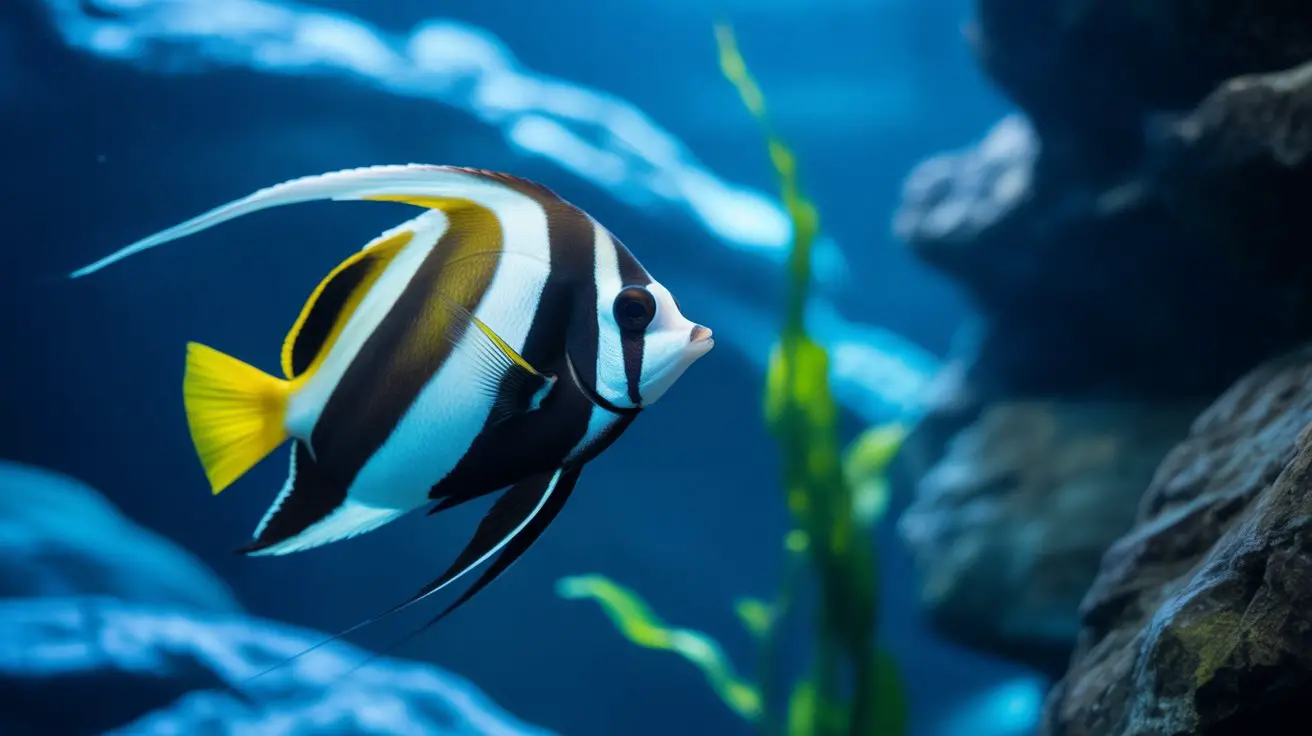
Although Moorish idols demonstrate complex social hierarchies and schooling behaviors in their natural reef environments, aquarium confinement severely disrupts these essential behavioral patterns and creates significant psychological stress.
You’ll observe these behavioral manifestations in captive specimens:
- Repetitive swimming patterns – stereotypic behaviors indicating neurological distress from spatial restriction
- Aggressive territorial displays – heightened intraspecific competition due to compressed living space
- Feeding hierarchy disruption – dominant individuals monopolize resources, causing subordinate stress responses
- Reduced exploratory behavior – diminished natural foraging instincts leading to behavioral apathy
- Social isolation stress – inability to form proper shoaling groups triggers cortisol elevation
These confined environments can’t replicate the three-dimensional reef matrix that supports their natural social dynamics.
You’ll notice deteriorating welfare indicators including lethargy, erratic swimming, and increased susceptibility to opportunistic infections as their psychological state compromises physiological resilience.
The Psychological Impact of Capture and Transport
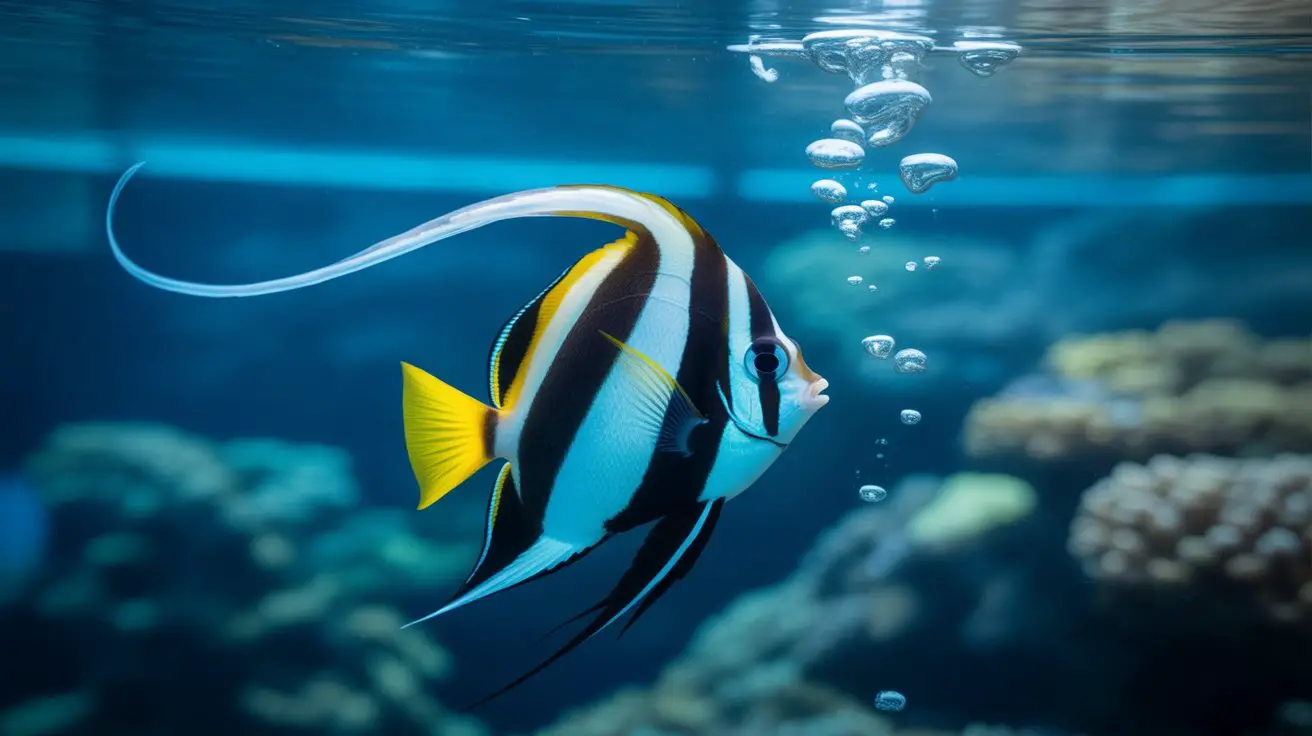
The trauma inflicted during capture and transport operations establishes the foundation for chronic stress disorders that persist throughout a Moorish idol’s captive existence.
You’ll observe elevated cortisol levels in specimens that undergo cyanide stunning or net capture, creating neurological damage that manifests as hypervigilance and feeding dysfunction.
Transport-induced hypoxia compounds this stress response, triggering sympathetic nervous system dysfunction that doesn’t resolve upon tank introduction.
Your specimens exhibit maladaptive behaviors including repetitive swimming patterns, territorial aggression, and social withdrawal—clear indicators of post-traumatic stress syndrome.
Research demonstrates that capture trauma permanently alters hypothalamic-pituitary-adrenal axis function, making these fish physiologically incapable of adapting to captivity.
You’re witnessing neurochemical imbalances that predispose your Moorish idols to immune suppression, metabolic disorders, and premature mortality regardless of ideal husbandry conditions.
Ethical Considerations and Alternative Fish Species for Marine Aquarists
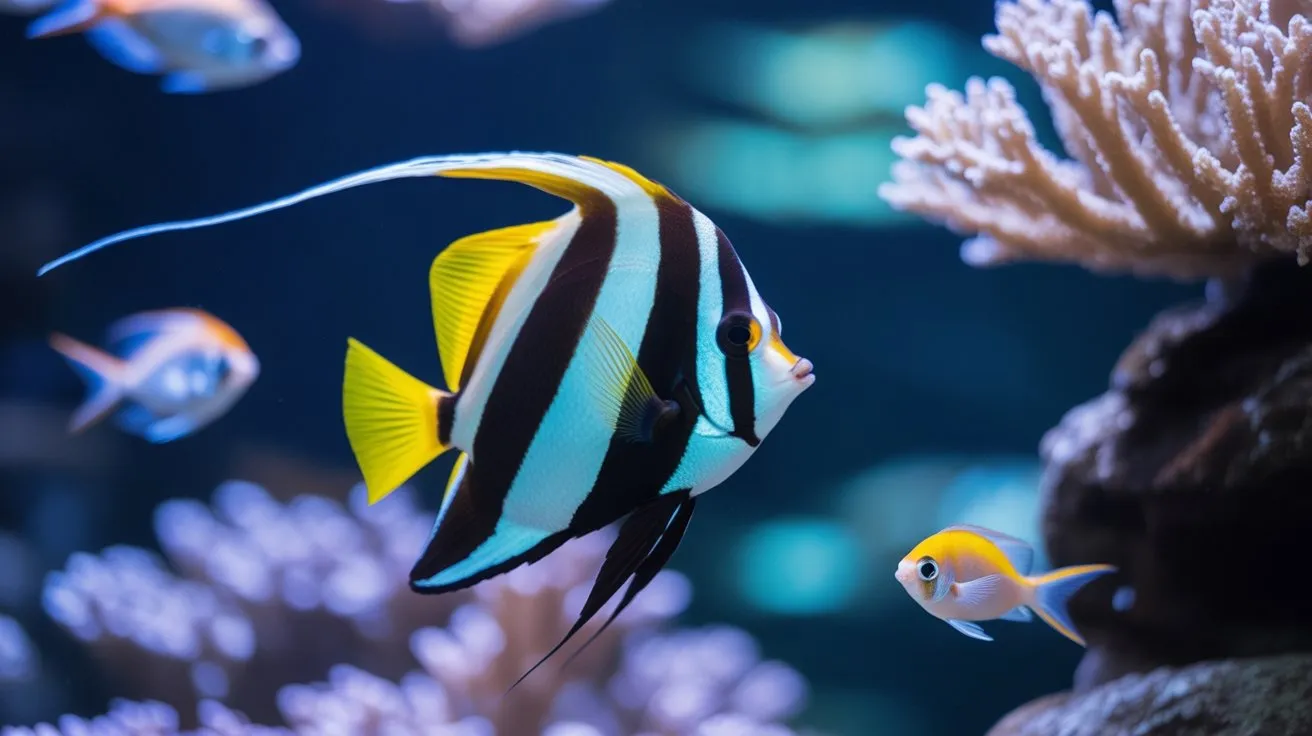
Given that maintaining Moorish idols requires accepting their inevitable decline and suffering, marine aquarists must confront fundamental ethical questions about species exploitation for aesthetic purposes.
You’re contributing to unsustainable collection practices that devastate wild populations.
Consider these scientifically-supported alternatives that exhibit similar morphological characteristics:
- Heniochus chrysostomus (Pennant bannerfish) – displays comparable coloration patterns with superior captive survival rates
- Heniochus acuminatus (Longfin bannerfish) – demonstrates identical body shape with established aquaculture protocols
- Forcipiger flavissimus (Yellow longnose butterflyfish) – exhibits analogous feeding behaviors with proven adaptability
- Chaetodon lunula (Raccoon butterflyfish) – shows similar size requirements with documented hardiness
- Pomacanthus semicirculatus (Semicircle angelfish) – presents comparable visual impact with sustainable collection methods
These species offer equivalent aesthetic value while maintaining ethical collecting standards and demonstrable long-term viability in controlled marine environments. Additionally, opting for these alternatives contributes to marine biodiversity preservation, which is vital for the health of ocean ecosystems.
Conclusion
You’re beating a dead horse if you continue attempting Moorish idol captivity despite overwhelming evidence. Their specialized biochemical requirements, elevated cortisol responses, and compromised immunological function in artificial environments create insurmountable challenges. You’ll face inevitable mortality rates exceeding 90% within twelve months due to nutritional deficiencies, osmotic stress, and behavioral pathologies. Consider alternatives like Heniochus species—you’ll achieve better welfare outcomes while maintaining aesthetic appeal in your marine system.
